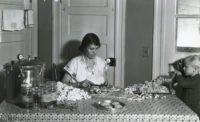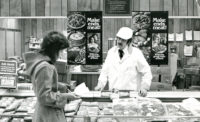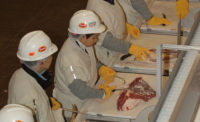Editor’s Note: The following is the third of six reports covering magazine highlights and major industry events during The National Provisioner’s 125 years in publishing.

Satisfying America’s meat needs during The National Provisioner’s (NP) first 50 years (1891-1941) in publishing was a monumental task. In 1890, one year before NP launched its premiere weekly issue, the United States population totaled nearly 63 million. By 1941 — the close of NP’s first half-century of publishing — it had more than doubled to 133 million. Additionally, per capita meat consumption rose significantly from 133.6 pounds in 1939 to 142.4 pounds in 1940.
As the U.S. entered World War II in December 1941, it appeared impossible to consistently satisfy livestock and meat demand from an increasing number of consumers plus the U.S. armed forces and its allies.
More meat was consumed in the U.S. in 1941 than ever before, said George A. Schmidt, chairman of the board of directors for the American Meat Institute in the Jan. 2, 1942, issue of NP. Almost 19.5 billion pounds of meat were consumed in 1941 as compared with a little more than 18.5 billion pounds in 1940. The average soldier ate approximately a pound of meat or more per day, totaling more than 300 pounds per year — more than twice that of the average American.
| Click here for more exclusive 125th anniversary coverage! |
Industry, however, quickly adapted to wartime needs. During WWII, the primary purpose of meat packaging shifted away from convenience or promotion to protection and efficiency. The April 25, 1942, NP included a report on work underway to conserve and adapt to new packaging materials, such as producing more tinned meats. Meanwhile, meat and other consumables were rationed to fit supply, and staffing shortages sapped industry as more people working with livestock and in packing/processing plants headed to war. Nevertheless, industry persevered.
In the waning days of WWII, some unusual NP reports tying in to the war were published. Chicago Tribune food economist/food editor Mary Meade predicted that some Army rations — frankfurters with beans, ham and egg combos and dehydrated corned beef — might become popular among postwar housewives.
NP began to suffer major personnel losses around this time as well. Perhaps the biggest was Paul I. Aldrich, 73, former retired NP president and editor, who died on May 15, 1943, at home after an extended illness. For nearly four decades, he had led the NP charge to convince packers and processors to modernize plants, improve products and meat merchandising methods, and he was active in shaping NP’s policies. His pioneering work in developing NP market news ultimately led to the creation of the magazine’s famous Yellow Sheet.
Postwar highlights
NP had begun publishing more features on trends affecting industry, technology and on-site, in-plant operations reports and major domestic and international industry news. Streamlined news briefs and editorials shifted to the front pages. More National Live Stock & Meat Board (NLS&MB) features focused on consumer meat trends and preparation. Industry association pre- and post-convention coverage, sometimes resulting in issues totaling more than 300 pages, became more frequent. Holidays — primarily Christmas — were reflected on cover and inside display advertisements; market reports were enhanced and expanded; meanwhile classified advertising pages continued growing.
Between 1916 and 1966, industry experienced the “birth of large-scale commercial cattle and hog feeding, including use of confinement, antibiotics and hormones; further slaughtering consolidation; partnerships between packers and producers in the western U.S. — and [the birth of] boxed beef,” says Maureen Ogle, Ames, Iowa-based historian and author of “In Meat We Trust” and other works.
“Ken Monfort began work on [the first] U.S. boxed-beef plant in 1962,” she adds. “I believe it was operational in 1963.”
Monfort Colorado Inc., originally called Monfort Feedlots, was founded in Greeley, Colo., in 1930. Ken was one son of founder Warren, who was credited for pioneering the feedlot concept. Both concepts revolutionized the American meat industry.
During the 1960s, industry continued evolving to meet emerging retail and foodservice market trends, chronicled NP and NLS&MB archives. Livestock and meat product transportation changed from railroads to trucking. Once built in or near centralized urban stockyards, new slaughter facilities were being erected closer to feedlots. Carcass beef was being purchased by retail chains and broken down and packaged centrally by retailer butchers.
America’s growing foodservice market offered opportunity for utilizing more further value-added, processed and prepared meat products. Further-processed poultry product development boosted turkey from a seasonal to year-round protein.
As U.S. beef and pork consumption led the pack in consumer protein preference, few insiders anticipated the meat market fragmentation and the enormous increase in poultry production and industry globalization that would take place in the next 25 years. NP









